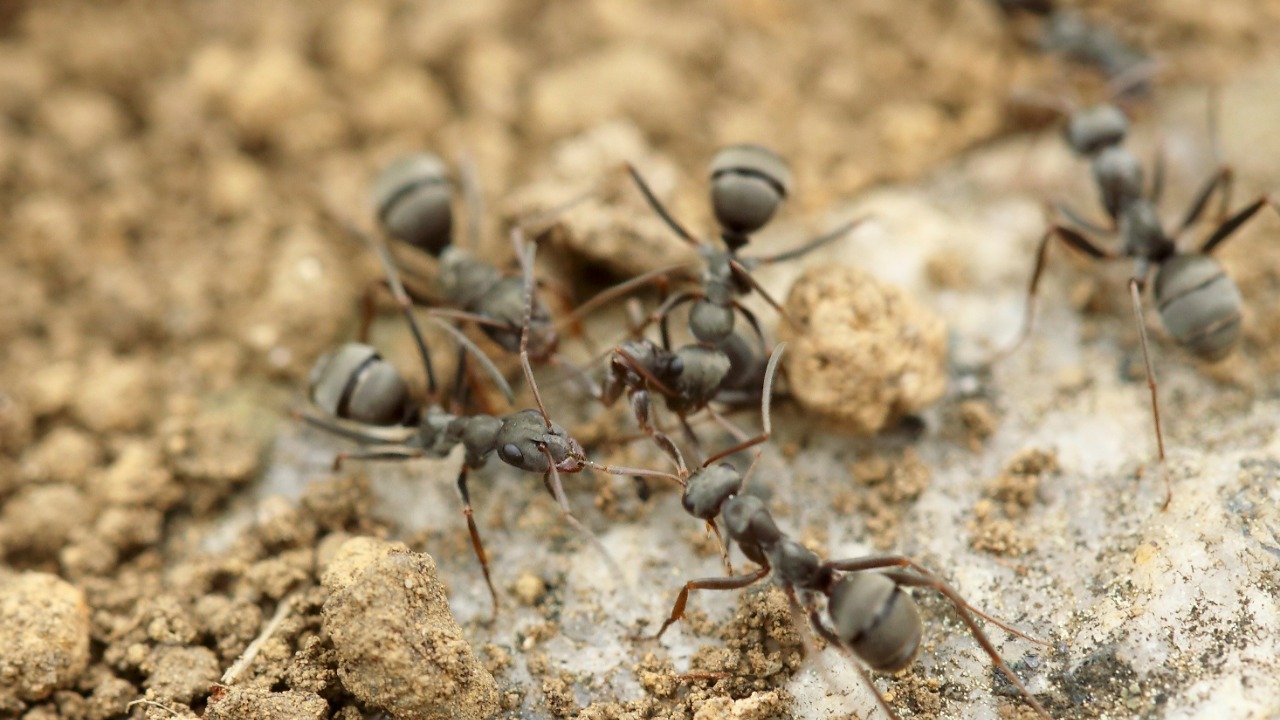
A groundbreaking study has uncovered that ants actively modify their nest networks to combat the spread of diseases within their colonies. This remarkable behavior showcases the ants’ ability to adapt their underground habitats by isolating infected areas, thereby safeguarding the colony’s health. Researchers observed these adaptive changes in controlled experiments, highlighting the sophisticated strategies ants employ to prevent epidemics.
Mechanisms of Nest Network Adaptation
Ants exhibit a fascinating ability to reorganize their nest structures in response to pathogen threats. When exposed to pathogens, ants quickly adjust their tunnel connections and chamber layouts to minimize contact between healthy and infected individuals. This behavior was observed in experiments where the introduction of pathogens led to immediate structural changes within the nests. Such adaptations are crucial for maintaining colony health and preventing widespread disease outbreaks [source].
Foraging trails play a significant role in these modifications. Ants reroute their paths to avoid contaminated zones while ensuring continued access to essential resources. This strategic rerouting helps maintain the colony’s functionality despite the presence of pathogens. The ability to adapt foraging trails demonstrates the ants’ intricate understanding of their environment and their capacity to prioritize colony survival [source].
The speed at which ants implement these changes is remarkable. Within hours of detecting a pathogen, ants can restructure their nests to minimize the risk of an epidemic. This rapid response is critical in preventing the spread of disease and highlights the ants’ proactive approach to colony health management. The swift adaptations underscore the importance of timely interventions in maintaining the overall resilience of the colony [source].
Experimental Design and Observations
The study involved a meticulously designed laboratory setup where artificial nest networks were exposed to fungal pathogens. Researchers focused on ant species like Temnothorax to monitor their behavioral and structural responses. The controlled environment allowed for precise observation of how ants reacted to pathogen exposure, providing valuable insights into their adaptive strategies [source].
Key metrics from the study revealed a 40% reduction in interconnectedness within the nest networks following pathogen exposure. This significant decrease in connectivity effectively curbed disease transmission, demonstrating the efficacy of the ants’ structural adaptations. By quantifying these changes, researchers were able to highlight the targeted nature of the ants’ responses to health threats [source].
Control groups that were not exposed to pathogens maintained stable network architectures, further emphasizing the specificity of the ants’ adaptations. This contrast between exposed and unexposed groups underscores the ants’ ability to detect and respond to health threats in their environment. The findings from these control groups provide a clear baseline for understanding the impact of pathogen exposure on nest architecture [source].
Implications for Broader Ecological Systems
The adaptive strategies observed in ant colonies offer valuable insights into disease dynamics in other social species. By understanding how ants manage pathogen threats, researchers can develop models that inform disease management in larger ecological systems. These insights are particularly relevant in scenarios where resource disruptions occur, as they highlight the importance of structural adaptations in maintaining community health [source].
There are notable parallels between ant nest modifications and human infrastructure changes during outbreaks. The ants’ ability to quickly adapt their environments to prevent disease spread offers scalable lessons for human societies. By studying these insect societies, researchers can identify strategies that enhance resilience and adaptability in the face of health threats, potentially informing public health responses [source].
In the long term, the ability to reduce epidemic spread significantly enhances colony survival. By minimizing disease transmission, ants ensure the continued health and functionality of their colonies, even in variable environments. This resilience is a key factor in the success of ant colonies and provides a model for understanding how social organisms can thrive despite external challenges [source].
Prior Research on Ant Behavioral Responses
Previous studies have laid the groundwork for understanding how ants adapt their nest networks in response to environmental changes. A 2020 study explored how ant colonies adjust to resource disruptions, providing foundational context for the recent findings on epidemic-related changes. This earlier research highlighted the ants’ capacity to modify their environments in response to various challenges, setting the stage for more focused investigations into disease prevention [source].
In 2024, researchers observed that ants altered their nest architecture specifically upon pathogen exposure. This investigation built upon previous findings by demonstrating the ants’ targeted responses to health threats. The study provided crucial insights into the mechanisms behind the ants’ structural adaptations, paving the way for the 2025 research on epidemic prevention [source].
Comparing these earlier works to the 2025 research reveals an evolving understanding of ants’ proactive network restructuring. The accumulation of evidence over time underscores the sophistication of ants’ behavioral responses and their ability to maintain colony health through strategic environmental modifications. This growing body of research continues to shed light on the complex interactions between social insects and their environments [source].